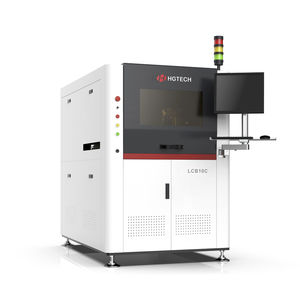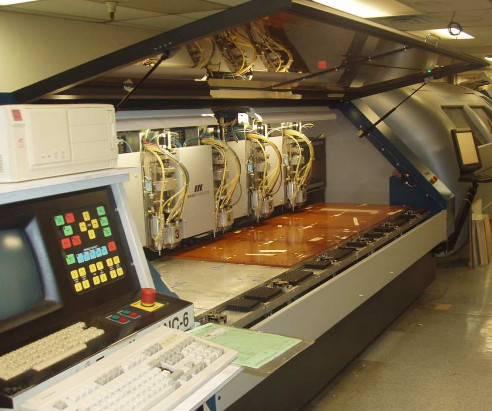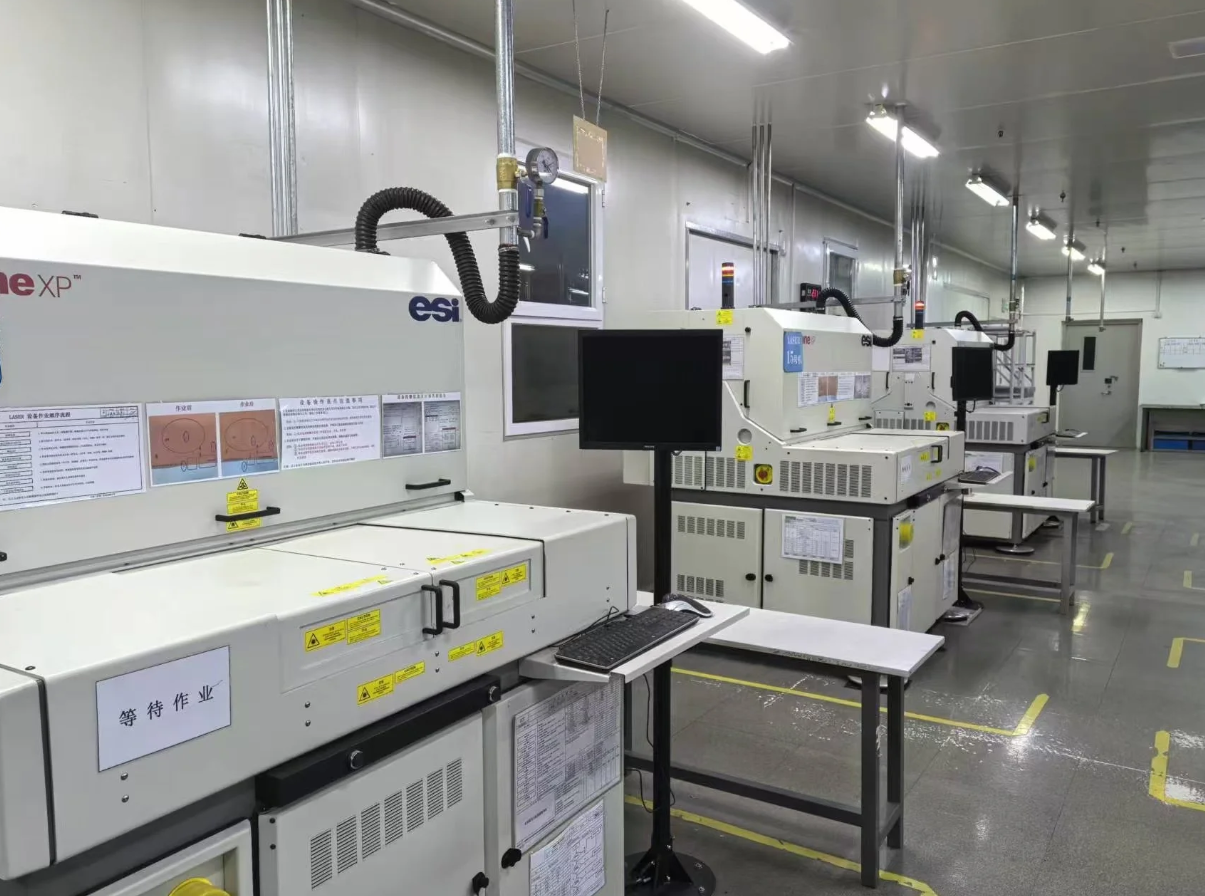In the fast-paced world of PCB manufacturing, laser drilling has become a critical technology for creating precise microvias and holes in printed circuit boards. However, with its precision comes potential hazards that can endanger operators and facilities if proper safety measures are not in place. So, how can you ensure safety during laser drilling operations? The key lies in following strict laser drilling safety guidelines, protecting both personnel and equipment through comprehensive protocols and best practices.
This blog post dives deep into essential laser safety guidelines tailored for PCB manufacturing. Whether you're focused on microvia drilling safety or overall PCB manufacturing safety, you'll find actionable advice to minimize risks and maintain a secure working environment. Let’s explore the critical aspects of laser drilling safety to help you safeguard your team and facilities.
Understanding the Risks of Laser Drilling in PCB Manufacturing
Laser drilling is a non-contact process that uses a focused beam of light to create tiny, precise holes in PCB materials like FR-4, Rogers, or ceramics. While this technology offers unmatched accuracy for microvias—often as small as 50 micrometers in diameter—it also introduces significant safety hazards. These risks include exposure to high-intensity laser radiation, toxic fumes from material ablation, and potential fire hazards from flammable substrates.
Operators face dangers such as eye injuries from direct or reflected laser beams, skin burns, and respiratory issues from inhaling fumes. Facilities, on the other hand, risk equipment damage or fires if safety protocols are ignored. Understanding these risks is the first step toward implementing effective laser safety guidelines in PCB manufacturing environments.

Key Laser Drilling Safety Guidelines for Operator Protection
Protecting operators during laser drilling operations is paramount. Below are essential guidelines to ensure their safety while maintaining productivity in PCB manufacturing.
1. Use Proper Personal Protective Equipment (PPE)
Operators must wear appropriate PPE to shield themselves from laser radiation and other hazards. This includes:
- Laser Safety Glasses: Choose eyewear rated for the specific wavelength of the laser being used, such as CO2 lasers (10.6 micrometers) or UV lasers (355 nanometers). Ensure the optical density (OD) rating is sufficient to block harmful radiation.
- Protective Clothing: Wear flame-resistant clothing to prevent burns from stray beams or sparks.
- Respiratory Protection: Use masks or respirators to avoid inhaling toxic fumes generated during the ablation of PCB materials like epoxy resins.
2. Limit Exposure to Laser Radiation
Laser beams can cause severe eye damage or blindness in milliseconds if viewed directly or via reflection. To minimize exposure:
- Install physical barriers or enclosures around the laser drilling area to prevent accidental exposure.
- Use interlock systems that automatically shut off the laser when safety doors are opened.
- Train operators to avoid looking into the beam path, even with protective eyewear, as a precaution.
3. Ensure Proper Training and Awareness
Untrained personnel are at a higher risk of accidents. Provide comprehensive training on:
- The specific laser equipment being used, including power settings and emergency shut-off procedures.
- Recognizing hazards like reflected beams or malfunctioning equipment.
- Emergency response protocols for injuries or equipment failures.

Microvia Drilling Safety: Special Considerations
Microvia drilling, which involves creating holes smaller than 150 micrometers, is a specialized application of laser drilling in high-density interconnect (HDI) PCBs. Due to the precision and intensity required, microvia drilling safety demands additional precautions.
1. Control Laser Parameters
Improper laser settings can lead to overheating, material charring, or excessive debris, posing risks to operators. Optimize parameters such as:
- Pulse Duration: Use short pulses (e.g., nanoseconds or femtoseconds) to minimize heat-affected zones.
- Power Levels: Adjust power to avoid over-penetration, which can create hazardous sparks or damage underlying layers.
2. Manage Fume Extraction
Microvia drilling often ablates small volumes of material, but the resulting fumes can still be harmful. Install high-efficiency ventilation systems to remove particulate matter and gases from the workspace. Ensure filters are replaced regularly to maintain air quality.
3. Monitor for Material-Specific Hazards
Different PCB materials react uniquely to laser drilling. For instance, drilling through metal-clad laminates can produce conductive debris, risking short circuits or operator injury. Tailor safety measures to the material, such as using protective covers to contain debris during drilling.
PCB Manufacturing Safety: Protecting Facilities
Beyond operator protection, laser drilling safety extends to safeguarding the manufacturing facility itself. A single oversight can lead to costly downtime or catastrophic damage.
1. Implement Fire Prevention Measures
Laser drilling can ignite flammable PCB materials or debris if not managed properly. To prevent fires:
- Keep the drilling area free of combustible materials.
- Install fire suppression systems, such as CO2 extinguishers, near laser equipment.
- Regularly clean equipment to remove dust or residue that could ignite.
2. Maintain Equipment Regularly
Faulty laser systems can malfunction, leading to uncontrolled beams or overheating. Schedule routine maintenance to check:
- Alignment of the laser beam to prevent unintended reflections.
- Condition of cooling systems to avoid overheating, which can cause equipment failure.
- Integrity of safety interlocks and emergency stop mechanisms.
3. Designate Restricted Zones
Create clearly marked restricted areas around laser drilling machines to limit access to authorized personnel only. Use warning signs and labels to indicate high-risk zones, ensuring non-operators stay at a safe distance.

Compliance with Laser Safety Standards
Adhering to established laser safety standards is non-negotiable for PCB manufacturers. These regulations provide a framework for minimizing risks and ensuring a safe working environment.
1. Follow OSHA Guidelines
In the United States, the Occupational Safety and Health Administration (OSHA) provides specific standards for laser hazards in general industry. Key requirements include:
- Labeling laser equipment with appropriate hazard warnings.
- Implementing control measures to limit exposure to laser radiation.
- Providing training and PPE to employees working with lasers.
2. Align with International Standards
For global operations, consider standards like those from the International Electrotechnical Commission (IEC) or the American National Standards Institute (ANSI). The IEC 60825-1 standard, for example, classifies lasers based on their risk level and outlines safety requirements for each class.
3. Conduct Regular Safety Audits
Perform periodic audits to ensure compliance with safety standards. Check for proper documentation of training, maintenance records, and incident reports. Address any gaps immediately to avoid penalties or accidents.
Creating a Culture of Safety in PCB Manufacturing
Technical measures and compliance are vital, but fostering a culture of safety is equally important. When everyone in the facility prioritizes laser drilling safety, the likelihood of accidents decreases significantly.
1. Encourage Reporting of Hazards
Empower operators to report unsafe conditions or near-miss incidents without fear of repercussions. This proactive approach helps identify potential issues before they escalate.
2. Conduct Regular Safety Drills
Simulate emergency scenarios, such as laser malfunctions or fires, to test response readiness. Use these drills to refine protocols and ensure all team members know their roles during a crisis.
3. Promote Continuous Learning
Stay updated on the latest advancements in laser safety guidelines and technologies. Attend industry webinars, workshops, or training sessions to keep your team informed about best practices in PCB manufacturing safety.
Conclusion: Prioritizing Laser Drilling Safety for Long-Term Success
Laser drilling is a game-changer in PCB manufacturing, enabling the creation of intricate microvias and supporting the development of cutting-edge electronics. However, its benefits come with inherent risks that must be managed through strict adherence to laser safety guidelines. By protecting operators with proper PPE, optimizing microvia drilling safety, safeguarding facilities from fire hazards, and complying with industry standards, manufacturers can create a secure and efficient production environment.
At ALLPCB, we believe that safety is the foundation of quality and innovation. Implementing these essential guidelines for laser drilling safety not only protects your team and facilities but also enhances productivity and reliability in your PCB manufacturing processes. Take the necessary steps today to build a safer tomorrow.
 ALLPCB
ALLPCB







